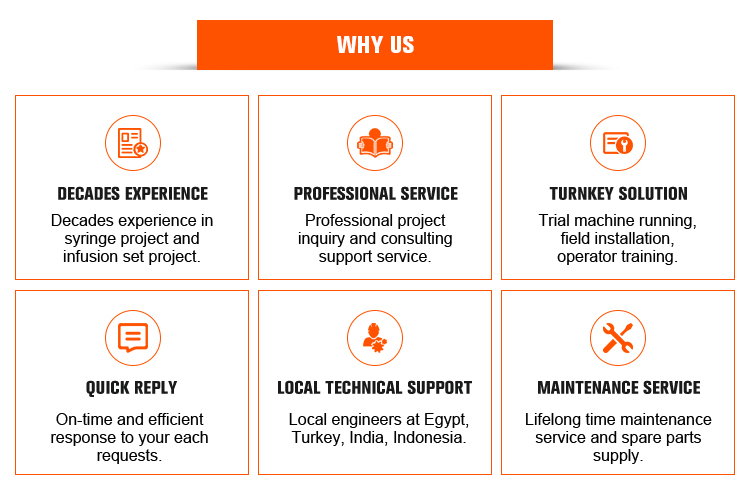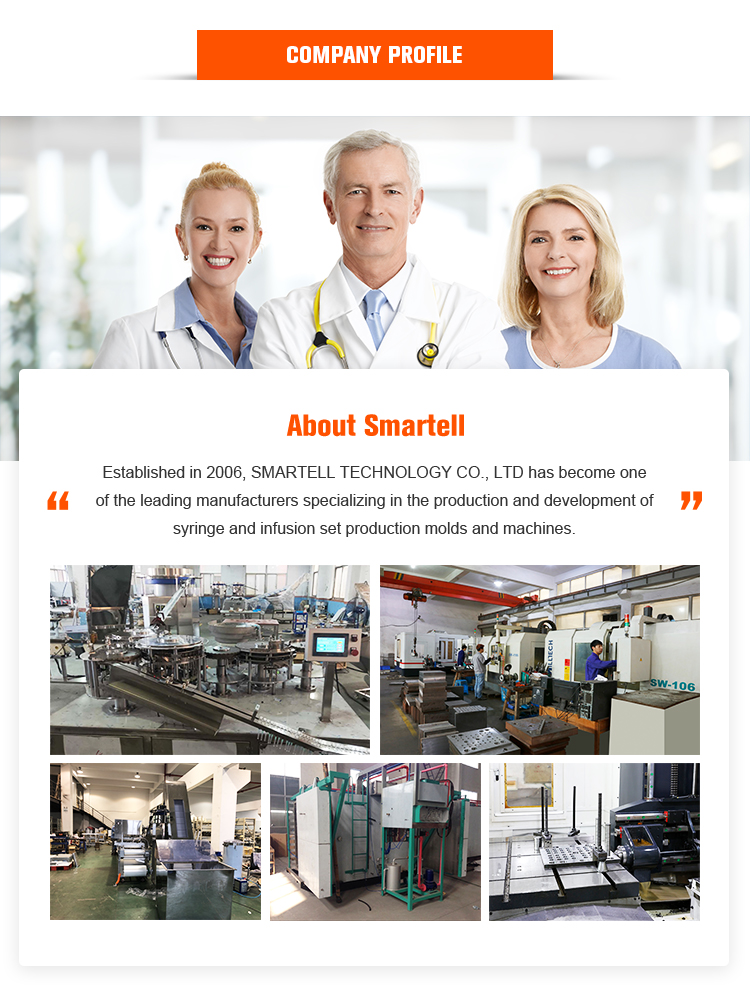| Availability: | |
|---|---|
| Quantity: | |
SMT-2001
Smartell






SPEC | Production Speed | Dimension | Weight | Power | Compressed air flow |
1ml | 280-300pcs/min | 3300x2700x2100mm | 1500kg | AC220V/5KW | 0.3m³/min |
2-10ml | 320-380pcs/min | ||||
20ml | 180-250pcs/min | ||||
30ml | 180-250pcs/min | ||||
50ml | 110-250pcs/min |
All parameters and dimensions are subject to change without prior notice.








SPEC | Production Speed | Dimension | Weight | Power | Compressed air flow |
1ml | 280-300pcs/min | 3300x2700x2100mm | 1500kg | AC220V/5KW | 0.3m³/min |
2-10ml | 320-380pcs/min | ||||
20ml | 180-250pcs/min | ||||
30ml | 180-250pcs/min | ||||
50ml | 110-250pcs/min |
All parameters and dimensions are subject to change without prior notice.



The medical and pharmaceutical industries are rapidly evolving, with innovation driving better quality control, improved patient care, and enhanced manufacturing processes. One such technological advancement is the use of specialized syringe printing machines. These machines play a critical role in the production of high-quality syringes, ensuring accurate markings, branding, and scale lines that are essential for both functionality and compliance. Let’s explore some of the most innovative syringe printing technologies currently in use.
What is it?
A syringe pad printing machine uses a silicone pad to transfer ink onto the surface of syringes. The pad, which is inked in a separate step, picks up the image or logo from an engraved plate and then transfers it to the syringe surface. This technique is often preferred for printing on curved or irregular surfaces like syringes, where other printing methods (like screen printing) may not be as effective.
How it works:
Ink Transfer: The printing plate is etched with the design (e.g., logo or text), and ink is applied to this plate. The silicone pad, which is soft and flexible, is pressed against the plate to pick up the ink.
Pad Transfer: The inked pad is then pressed onto the syringe, transferring the design onto its surface. The ink used is usually medical-grade and durable to withstand sterilization processes.
Advantages:
High Precision: Offers extremely fine detail in the printed image. Even complex logos or small text can be printed accurately.
Flexibility: Works well with syringes made from different materials like plastic, glass, or rubber.
Durability: The printed design is resistant to fading and wear, making it suitable for medical devices that undergo regular handling and sterilization.
Applications:
Logo and Brand Printing: Manufacturers can print logos, brand names, and certification marks (e.g., CE, ISO) on syringes to ensure brand visibility.
Text and Dosage Information: Syringes may require printing of usage instructions or dosage information for medical professionals.
Regulatory Compliance: Printing batch numbers, expiration dates, and other regulatory markings is crucial to ensure compliance with industry standards.


The medical and pharmaceutical industries are rapidly evolving, with innovation driving better quality control, improved patient care, and enhanced manufacturing processes. One such technological advancement is the use of specialized syringe printing machines. These machines play a critical role in the production of high-quality syringes, ensuring accurate markings, branding, and scale lines that are essential for both functionality and compliance. Let’s explore some of the most innovative syringe printing technologies currently in use.
What is it?
A syringe pad printing machine uses a silicone pad to transfer ink onto the surface of syringes. The pad, which is inked in a separate step, picks up the image or logo from an engraved plate and then transfers it to the syringe surface. This technique is often preferred for printing on curved or irregular surfaces like syringes, where other printing methods (like screen printing) may not be as effective.
How it works:
Ink Transfer: The printing plate is etched with the design (e.g., logo or text), and ink is applied to this plate. The silicone pad, which is soft and flexible, is pressed against the plate to pick up the ink.
Pad Transfer: The inked pad is then pressed onto the syringe, transferring the design onto its surface. The ink used is usually medical-grade and durable to withstand sterilization processes.
Advantages:
High Precision: Offers extremely fine detail in the printed image. Even complex logos or small text can be printed accurately.
Flexibility: Works well with syringes made from different materials like plastic, glass, or rubber.
Durability: The printed design is resistant to fading and wear, making it suitable for medical devices that undergo regular handling and sterilization.
Applications:
Logo and Brand Printing: Manufacturers can print logos, brand names, and certification marks (e.g., CE, ISO) on syringes to ensure brand visibility.
Text and Dosage Information: Syringes may require printing of usage instructions or dosage information for medical professionals.
Regulatory Compliance: Printing batch numbers, expiration dates, and other regulatory markings is crucial to ensure compliance with industry standards.








